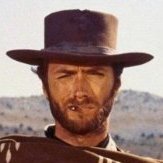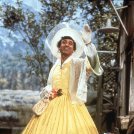-
Recently Browsing 0 members
- No registered users viewing this page.
Announcements
-
Topics
-
Latest posts...
-
115
Trump to remove legal immigrants.
I disagree with the first part of your statement but agree with the last part. -
267
V P Debate
You do realise that America presumes to rule the world, don't you? With this in mind I think foreigners should have vote in US elections, the American voters aren't doing an adequate job. -
139
Harris Lies, Americans Die. Illegal Aliens are more Important
? legal immigrants could always become citizens. Harris is trying to make it so illegals can become citizens, fast tracked- 1
-

-
139
Harris Lies, Americans Die. Illegal Aliens are more Important
Thank you for your service and Im sorry our government sold you out. If it means anything, you helped bring down the Soviet Union and end the Cold War.- 1
-

-
59
Corruption scandal hits the brakes: Thailand’s bus industry whistleblows dirty dealings
whistleblowers in TH will be met with defamation ... why you think they have these laws ? so corrupted thrive and all good reviews are fake -
59
Corruption scandal hits the brakes: Thailand’s bus industry whistleblows dirty dealings
Who is shocked by this? Did anyone here think it was any different than this? -
59
Corruption scandal hits the brakes: Thailand’s bus industry whistleblows dirty dealings
But who could expect something like this? -
3,493
President Kamala Harris
You should have kept going with your red underlining and continued with 'If your state requires further information, your election official will contact you.' That's the key part that you neglected to highlight. I registered on-line to vote in Virginia. In filling out the form, I first had to select the last voting precinct in Virginia where I had been registered to vote. They also required my last address where I lived in Virginia when I was registered to vote. I couldn't remember my condo number since I had moved so often doing condo flips but I did remember the street address and I figured that would be enough information. Wrong. That's when 'If your state requires further information . . .' came into play. They emailed me back and told me they needed the condo number before they could process my voter application and allow me to vote. So, after a search, I finally did find the condo number and resubmitted my application, which was approved, and I was sent out a voter ballot. You also highlighted the fact that a voter application will be accepted, even if an applicant doesn't include social security number, driver's license, etc. Yes, likely so. The application will be accepted for processing but, like my first try, not necessarily approved if there is not enough information to determine if you are eligible to vote. It would have been nice if I could have then voted by email but only a few states allow this, so far. I had to print my ballot, fill out the ballot, put the ballot in an envelope and seal it, print out and then fill out and sign a form swearing I am who I am and eligible to vote, paste this form to the envelope, put the first envelope into a second envelope, print out and paste the address form of where the ballot is to be sent to the second envelope, seal the envelope, and then go to the post office and mail it. Since I am overseas, I also had to pay to mail the ballot, as I don't live anywhere near a US Embassy to drop it off. That's what I went through in order to vote. I, for one, think the process should be easier than that, not made more difficult, so more voters don't just give up and decide not to even bother to vote--too much trouble. If Republicans are worried that making voting easier favors Democrats, perhaps they should look at both their platform and the Presidential candidate they have been fielding for 3 elections. -
4
China’s Military Expansion and America’s Defense Deficiency
If you compare China with US since 1945 it was US, who wasted money in unnecessary und useless wars and unsuccessful CIA activities. And again it's US who drag us in proxy wars in Ukraine and Israel. Hopefully they will not Push us into WW3 -
267
V P Debate
Under the circumstance that it is desired by the minor and recommended by a doctor (psychologist), But I don't know if there is any instance of this in very young minors. I'd think this procedure would only be an option for minors above 15 or 16 years old. However, gender-related behaviors start appearing when they are only two or three years old. That's probably a mix of hormones and parental/societal expectations. -
139
Harris Lies, Americans Die. Illegal Aliens are more Important
Read between the lines of the carefully crafted military statement. They have been ready, leadership has not. -
4
Anutin Blessed for PM Role at Newin's Birthday Ceremony
The thought of Anutin as PM is a frightening thought for the future of Thailand. The only thing that Anutin is good at is under-achieving. -
39
Bruce Springsteen's Call to Action: Endorsing Harris, Criticizing Trump
Let's see the anus first, then we'll talk business. -
23
Bangkok Streets to Undergo Significant Improvements
There’s too much corruption by the governors in each province to actually care about the people that are handicap. They need to sidewalks TIT. -
531
Frozen in time: British expats losing out on pensions in Thailand
That has being the same for many years live here pension frozen.phillipines not.Why I don,t know
-
.png.3b3332cc2256ad0edbc2fe9404feeef0.png)












Recommended Posts
Create an account or sign in to comment
You need to be a member in order to leave a comment
Create an account
Sign up for a new account in our community. It's easy!
Register a new accountSign in
Already have an account? Sign in here.
Sign In Now